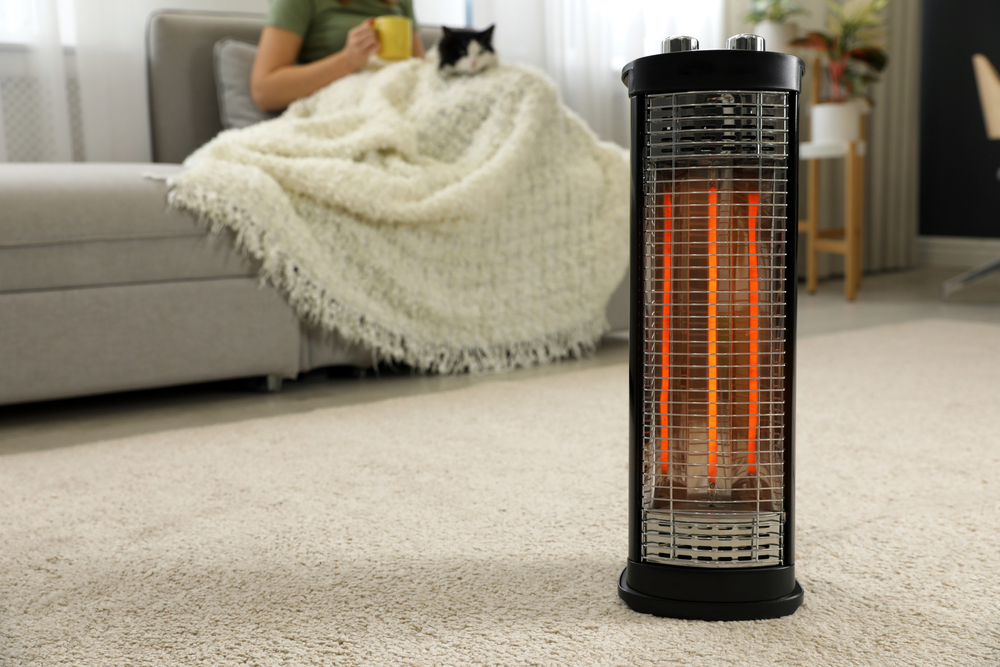
Having an additional heat source in your home can make all the difference between staying toasty warm during the winter and feeling like you live in a walk-in refrigerator, but not all space heaters are created equally. Whether you share your home with a canine companion, a cuddly kitten, or both, safety is paramount when picking the right space heater for your home. Choosing space heaters for pets requires some research, but we’ve got you covered.
Let’s look closer at our top picks for the best pet-friendly space heaters on the market.
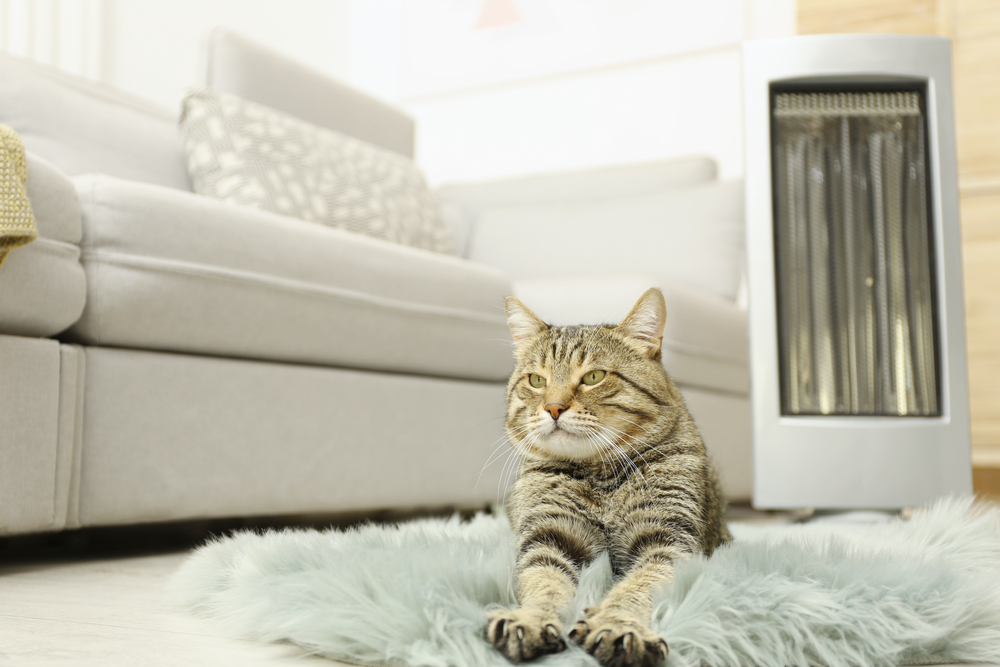
Essential safety tips for using space heaters around pets
If we’re being completely transparent, there is no such thing as a truly pet-safe space heater. Heating sources can be dangerous for wandering paws, but with the proper supervision and safety-proofing measures, you can warm up your pet and your home without worrying about your pet’s wellbeing.
Firstly, make sure to supervise your pet any time they’re in the same room as a space heater. Because these small appliances can be fire hazards, you should only have them on when you’re nearby, anyway. Make sure there are no strings, tassels, or loose items that may get caught in the heat source. This means finding a safe and secure location to put your space heater where tails and noses can’t reach.
Lastly, make sure to choose a space heater with built-in pet-friendly features. Keep reading to find out what to look for!

How to choose the best pet-friendly space heater
Some space heaters can be pricey — we understand — but you’ll want to prioritize finding the safest model for your fur babies. Here’s what to look for and what to avoid!
Some space heater models have exposed heating elements, which can pose a danger to animals. Instead, look for space heaters that remain cool to the touch. Most ceramic space heaters have a plethora of built-in safety features like a cool-touch design and tip-over protection that automatically shuts off your heater if it gets knocked over.
Space heaters that are close to the ground are also more difficult for athletic fur babies to knock over. If you choose a tower heater, be sure to get one with a heavy base. Never place your heater directly on top of a table or dresser, either. Curious cats love to knock things over, and the last thing you want is for your cat — or a powerful dog’s tail — to knock your heater off a table.
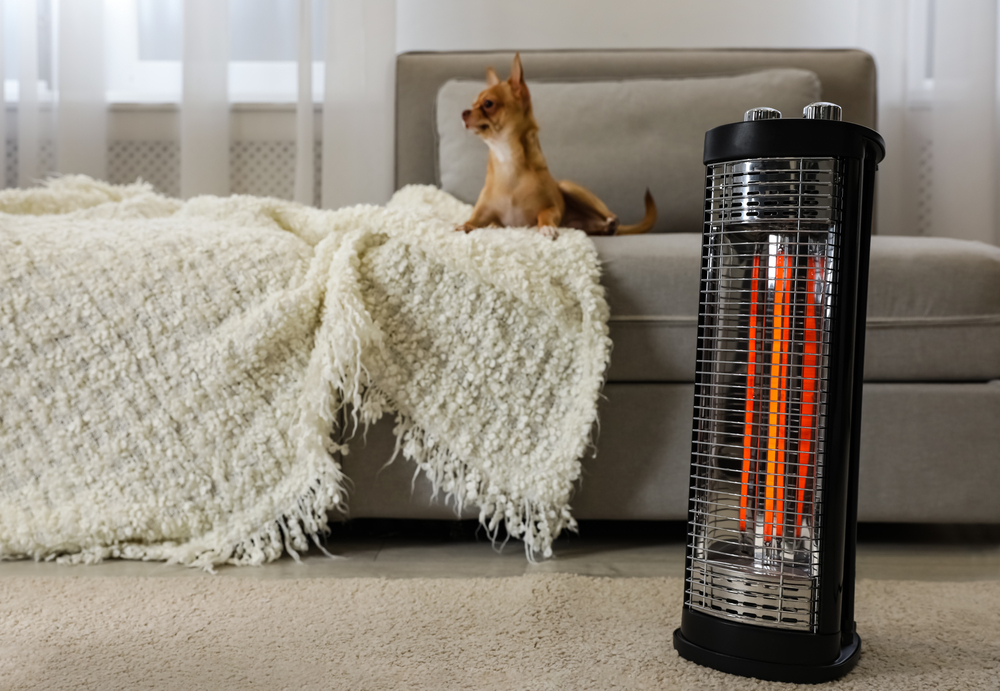
The best space heaters for homes with pets
Without further ado, let’s have a look at our top three picks for pet-friendly space heaters.
Good: Lasko 755320 Ceramic Space Heater
Lasko’s space heater is 7.25 by 8.6 by 23 inches, which makes it the largest on our list. It features a high-heat mode, a low-heat mode, and an auto setting that makes warming your home quick and efficient. Lasko’s heater also uses oscillation to evenly distribute warm air, preventing uncomfortable hot spots. The digital thermostat and included remote control make adjusting your heat settings effortless, and the heater has a built-in timer that lets you cycle it to run at one-hour intervals. It offers overheat protection and cool-touch housing, so your frisky feline or curious pup won’t burn her nose if she gets too close.
Pros:
- Not too expensive.
- Built-in safety features.
- Has a digital display.
- Comes with a remote control.
Cons:
- Only two heat settings.
- No tip-over protection.
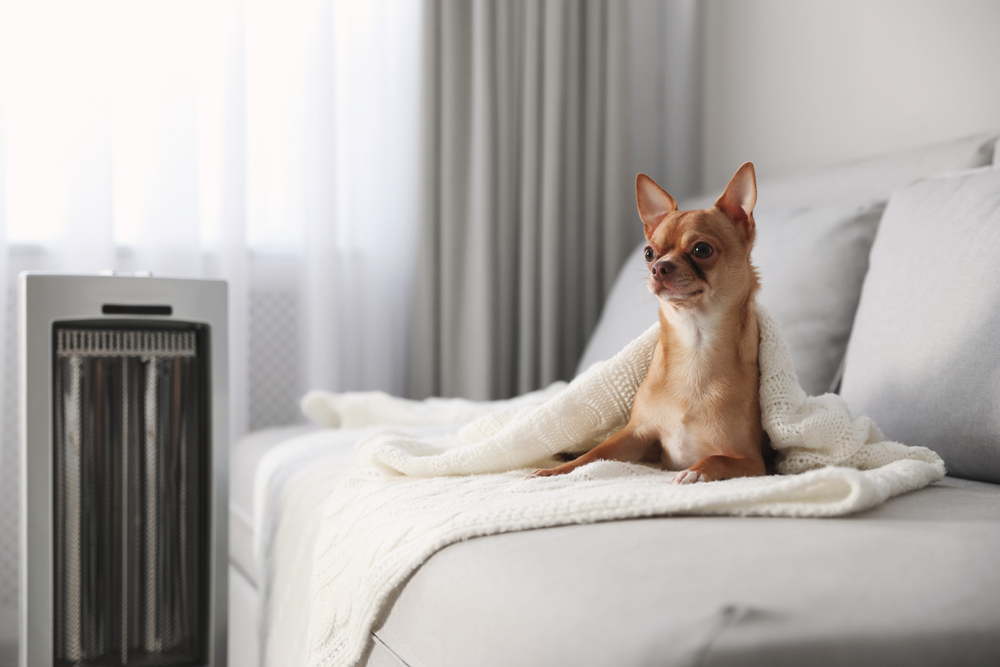
Better: Pelonis NTH15-17BRA Portable 1500W Vertical and Horizontal Ceramic Tower Space Heater
Standing 7.4 by 7.4 by 22.5 inches, this tower heater from Pelonis uses a flame-resistant ABS UL94 VO housing (that’s the outside layer of the heater) that remains cool to the touch. One of its most distinctive features is that it can be used vertically or horizontally, ideal if you have a hyperactive fur baby zooming through your home. The heater has built-in overheating protection, and it can reach 70 degrees Fahrenheit in just three seconds. Pelonis’ option comes with three heat settings: high, low, and ECO Mode, so you can easily adjust the temperature.
Pros:
- Three heat settings.
- Made with flame-resistant material.
- Comes with a remote control.
- Use vertically or horizontally.
Cons:
- No tip-over protection.
- No room temperature display.
- Has to be reprogrammed after it’s unplugged.
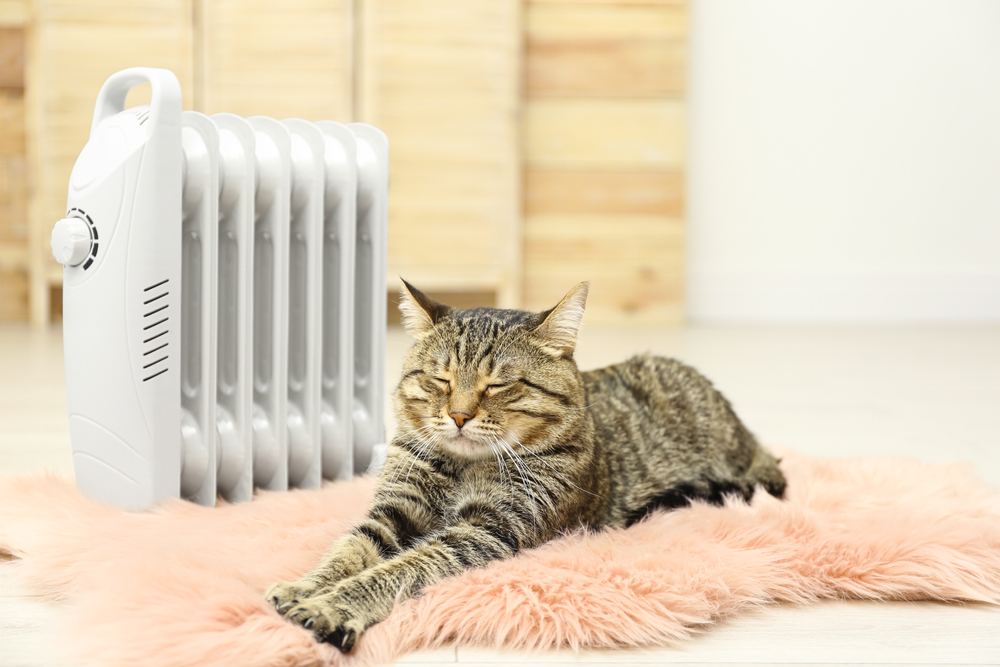
Best: Honeywell HCE200W UberHeat Ceramic Heater
Measuring only 9.02 by 6.5 by 10.24 inches, this compact space heater looks more like a minimalistic speaker than a heat source. Despite its small, unassuming appearance, it boasts a multitude of safety features, including a cool-touch surface, overheating protection, and a tip-over switch. Offering 1,500 watts of heat, Honeywell’s model has two heat settings, and the lower setting is perfect if you worry about the potential impact on your electric bill.
Pros:
- Affordable price point.
- Several safety features.
- Stays cool to the touch.
- Compact size.
Cons:
- No remote control.
- Heats only small spaces.
Choosing the right space heater for your home can be daunting, but we hope our guide makes things a bit easier. Even if you choose one of the models on this list, remember to never leave your pet unattended with a space heater. Also, be mindful to plug it in directly to an outlet instead of an extension cord, and unplug it if you smell anything burning. With a bit of research and a little common sense, though, you can use a space heater safely around your fur babies.



